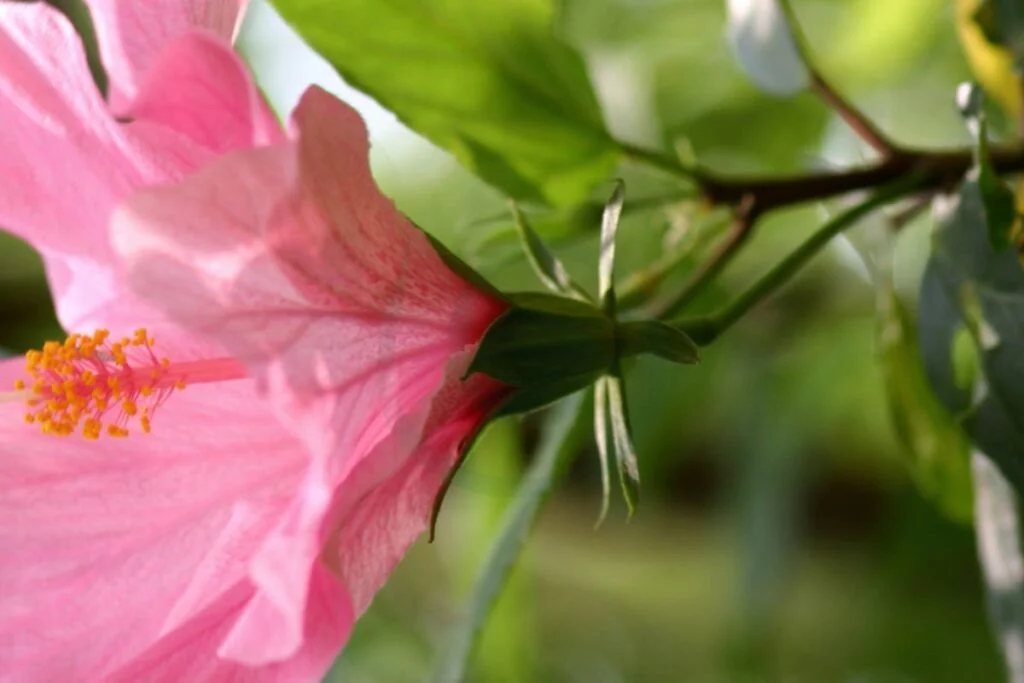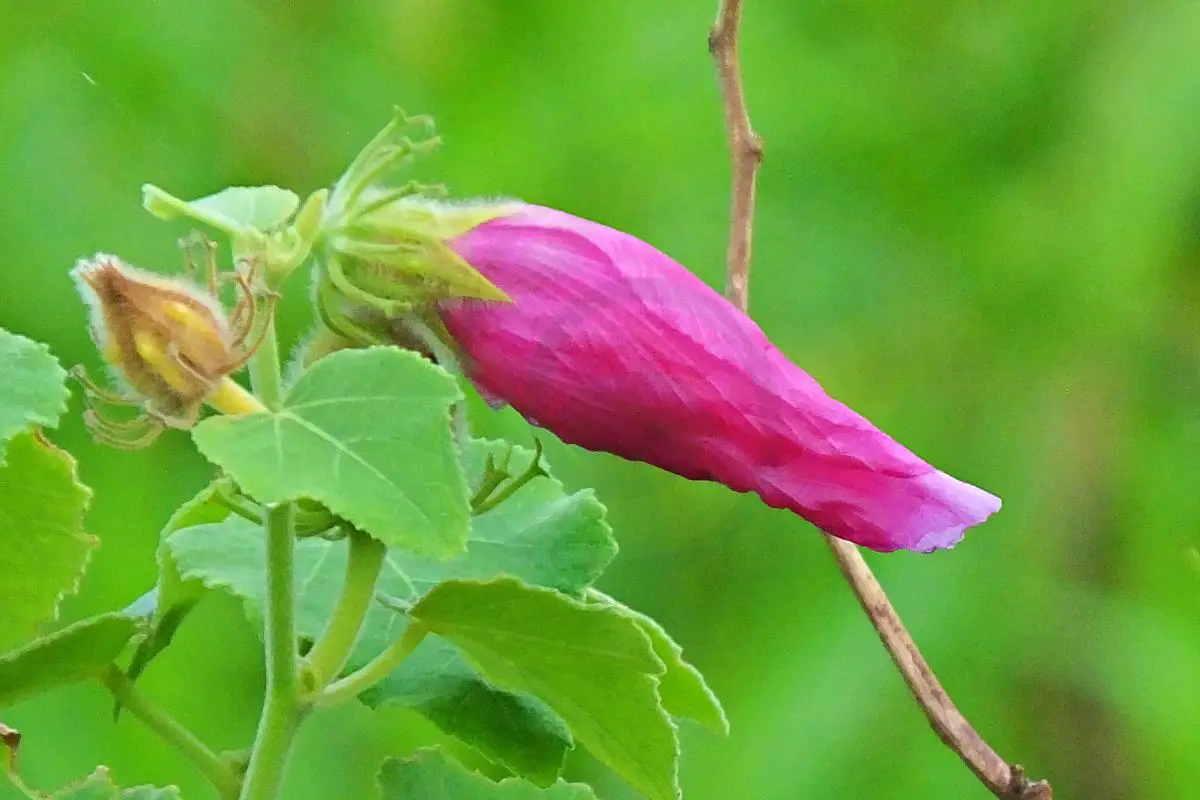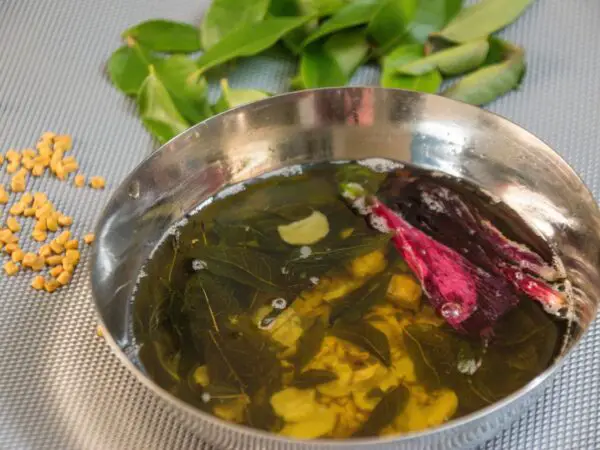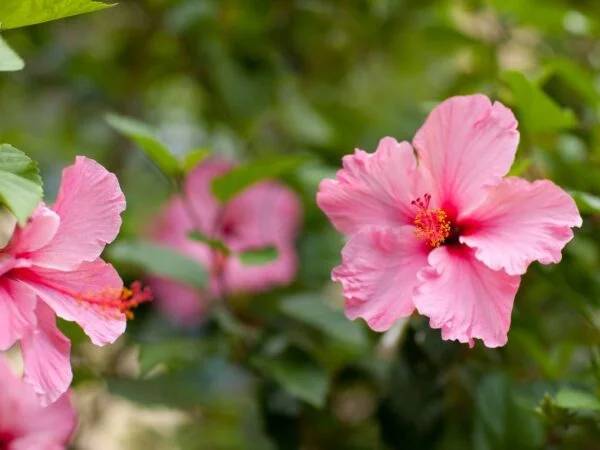Wondering when to cut back hibiscus in Florida? We've got you covered with expert advice on watering, spring pruning, and weather to ensure your tropical delights thrive year-round in the Sunshine State.
Curious about the best time to trim your hibiscus for optimal growth and vibrant blooms? Stay tuned as we delve into the ideal pruning schedule tailored specifically for Florida's unique climate, weather, watering, and tropical delights. Whether you're a seasoned gardener or just starting, our comprehensive guide will equip you with the knowledge needed to keep your hibiscus looking lush and healthy.
Ready to elevate your gardening game and achieve stunning results with your hibiscus plants? Keep reading for valuable insights and practical techniques that will transform your garden into a floral paradise.
Key Takeaways
- Prune hibiscus in Florida during late winter or early spring to encourage new growth and blooming.
- Regular pruning helps maintain the health and shape of hibiscus plants, promoting better flowering.
- Avoid heavy pruning during the cooler months to prevent stress on the plant.
- Monitor hibiscus for signs of pests or diseases while pruning, addressing any issues promptly.
- Apply fertilizer after pruning to support the plant's growth and overall health.
- Consider advanced pruning techniques for shaping or rejuvenating older hibiscus plants.
Understanding Pruning
Importance
Pruning hibiscus is crucial for its health, promoting new growth and vibrant blooms. It helps remove dead or diseased branches, allowing the plant to focus energy on healthy parts. By shaping the plant through pruning, you can enhance its appearance, creating a more visually appealing garden landscape.
Best Practices
When pruning hibiscus, it's essential to use sharp and clean tools to prevent infections and ensure precise cuts. Start by removing dead or damaged branches, then proceed to shape the plant for optimal growth. Following proper pruning techniques not only fosters healthier plants but also encourages more abundant flowering throughout the season.
Timing Insights
Timing plays a crucial role in pruning hibiscus in Florida. The best time to prune is in late winter or early spring before new growth emerges. This timing allows the plant to recover from pruning stress and prepares it for the upcoming growing season. Pruning during this period promotes vigorous growth and maximizes blooming potential during the warmer months.
Tools Required
To effectively prune hibiscus, you will need a few essential tools:
- Pruning shears: Ideal for cutting small branches and stems.
- Loppers: Used for thicker branches that pruning shears cannot handle.
- Hand saw: Helpful for larger branches that loppers may struggle with. Ensure these tools are sharp and clean to make precise cuts without causing unnecessary damage to the plant. Using the right tools not only makes the pruning process easier but also minimizes the risk of introducing infections to the hibiscus.
Hibiscus in Florida
Growth Patterns
Hibiscus plants in Florida exhibit vigorous growth, reaching heights of up to six feet within a single season. Understanding these growth patterns is crucial for strategic pruning decisions. Pruning directly influences the direction and density of hibiscus growth, shaping the plant's overall appearance.
Climate Impact
The tropical climate of Florida significantly impacts the pruning requirements of hibiscus. High temperatures and humidity levels promote rapid growth, necessitating frequent pruning to maintain plant health. Adjusting pruning practices based on local climate conditions ensures optimal growth and flowering.
Species Varieties
In Florida, various hibiscus species thrive, including the Chinese hibiscus and the Rose of Sharon. Each species has distinct pruning requirements and growth habits. For instance, the Chinese hibiscus requires regular trimming to encourage new blooms, while the Rose of Sharon benefits from thinning cuts to enhance air circulation.
Pruning Basics
Why Prune
Pruning hibiscus plants is essential to promote new growth and enhance flowering. Regular pruning helps in maintaining the plant's shape, improving air circulation, and preventing diseases. It also stimulates the growth of new branches and encourages the production of more vibrant blooms.
It is crucial to prune hibiscus for overall plant health. By removing dead or diseased branches, you allow the plant to allocate resources more efficiently towards healthy growth. Pruning also helps in shaping the plant and controlling its size, making it more aesthetically pleasing in your garden.
When to Prune
March Focus
In Florida, March is a critical month for pruning hibiscus plants. Early spring pruning in March sets the stage for robust growth throughout the growing season. This timing allows the plant to recover from any winter damage and prepares it for a burst of new growth as temperatures rise.
During March, focus on removing dead wood, shaping the plant, and encouraging new shoots to develop. Trim back leggy growth to promote bushier foliage and more prolific flowering later in the season. Ensure that you prune lightly to avoid stressing the plant during this active growth period.
Seasonal Guide
For optimal hibiscus care, follow a seasonal guide for pruning throughout the year. In spring, focus on rejuvenating the plant after winter dormancy by removing damaged or weak branches. Summer pruning should mainly involve deadheading spent flowers and light shaping to maintain form.
As fall approaches, reduce pruning activities to allow the plant to prepare for dormancy naturally. Winter is generally a period of minimal pruning; however, you can still remove any dead or crossing branches carefully. Adjust your pruning schedule based on seasonal changes in temperature and daylight hours.
How to Prune
Cutting Techniques
When pruning hibiscus plants, utilize various cutting techniques such as pinching, heading back, or thinning out branches strategically. Pinching involves nipping off soft shoot tips to encourage branching and denser foliage. Heading back entails cutting back longer stems to promote lateral growth.
Precision is key when applying cutting techniques to hibiscus; make clean cuts just above a leaf node or bud without leaving stubs that could invite disease. Thinning out branches involves selectively removing overcrowded or weak growth to improve air circulation within the plant canopy.
Safety Measures
Prioritize safety when pruning hibiscus by wearing protective gear like gloves and goggles to prevent injuries from sharp thorns or debris. Use sharp, clean tools like bypass pruners or loppers for precise cuts that minimize damage to the plant tissue. Avoid over-pruning as it can weaken the plant's overall structure and health.
Promoting Healthy Growth
Stimulating Blooming
Pruning stimulates blooming in hibiscus plants by removing old growth and encouraging new shoots. This process redirects the plant's energy towards producing more flowers, resulting in a lusher bloom. When you prune hibiscus correctly, you create space for fresh growth, leading to abundant flowering.
The relationship between pruning and flower production in hibiscus is direct. By trimming branches, you stimulate the plant to focus on developing new buds and blooms. Proper pruning techniques such as pinching back spent flowers or cutting above leaf nodes can promote continuous blooming throughout the growing season.
Tips for enhancing blooming include pruning after each flowering cycle to encourage new growth. regular deadheading – removing faded flowers – can signal the plant to produce more blooms. Ensuring adequate sunlight, water, and nutrients alongside pruning will result in vibrant and healthy hibiscus blooms.
Enhancing Plant Health
Pruning contributes significantly to the overall health of hibiscus plants by promoting air circulation and light penetration within the canopy. Adequate airflow reduces humidity levels, preventing fungal diseases that thrive in moist conditions. By thinning out crowded branches, you enable sunlight to reach all parts of the plant, enhancing photosynthesis and overall vitality.
The role of pruning in preventing diseases and pest infestations cannot be overstated. Regularly trimming dead or diseased branches removes potential entry points for pathogens and pests. By maintaining a well-pruned hibiscus, you minimize the risk of infestations that can weaken the plant's immune system.
Insights on proper pruning practices reveal that clean tools, such as sharp shears sanitized between cuts, are essential for preventing infections. Pruning during dry periods reduces the chances of spreading diseases through open wounds on plants. Consistent monitoring for signs of disease or pest activity post-pruning allows for early intervention to safeguard plant health.
Preventing Diseases
Pruning plays a crucial role in preventing common diseases in hibiscus plants by eliminating infected areas before they spread. Removing diseased or damaged parts during pruning stops pathogens from spreading further within the plant. This proactive approach not only protects the affected area but also prevents diseases from affecting other healthy parts of the plant.
Maintaining plant hygiene is key to reducing disease risks post-pruning. Practices like cleaning pruners with a disinfectant between cuts prevent cross-contamination between plants. Disposing of pruned material properly ensures that no diseased debris remains near the plant, minimizing the chance of reinfection.
To reduce the risk of diseases post-pruning, ensure proper watering practices to avoid waterlogged soil that can lead to root rot. Applying a balanced fertilizer after pruning helps replenish nutrients lost during trimming, supporting overall plant health and resilience.
March Pruning Guide
Ideal Timing
Timing plays a crucial role in achieving optimal pruning results for hibiscus plants. Pruning hibiscus in Florida should be done strategically to promote healthy growth and vibrant blooms. The ideal times of the year for pruning vary depending on your objectives. For overall plant health, prune hibiscus in late winter or early spring before new growth emerges. If you aim to shape the plant or control its size, prune after the blooming season. Understanding the plant's growth cycles and seasonal changes is essential for scheduling pruning activities effectively.
Step-by-Step Process
To successfully prune hibiscus plants, follow a systematic approach. Start by inspecting the plant for any dead or damaged branches that need removal. Use sharp, clean pruning shears to make precise cuts at a 45-degree angle just above a leaf node. Remove no more than one-third of the plant at a time to avoid stressing it excessively. Focus on cutting back leggy stems to encourage bushier growth and more blooms. Beginners should start with light pruning and gradually increase intensity as they gain confidence.
Post-Pruning Care
After pruning, it's crucial to provide proper care to support hibiscus plant recovery and new growth. Water the plant deeply but infrequently to prevent root rot and encourage deep root establishment. Apply a balanced fertilizer specifically formulated for flowering plants to promote healthy foliage and abundant blooms. Monitor the plant regularly for signs of stress or nutrient deficiencies post-pruning. Proper care ensures that your hibiscus thrives and continues to grace your garden with its beauty.
Addressing Concerns
Impact on Flowering
Pruning directly affects the flowering cycle of hibiscus plants by stimulating new growth. This process enhances flower production and encourages blooms to be more abundant. Timing pruning correctly is crucial to maximize the plant's flowering potential.
When hibiscus plants are pruned, they divert their energy towards producing new branches and flowers. This results in an increase in the quantity of flowers blooming on the plant. Pruning helps improve the overall quality of the flowers by promoting healthier growth and vibrant colors.
To ensure optimal flowering, it is recommended to prune hibiscus plants right before their growing season begins. By trimming them at this time, you can encourage vigorous growth that leads to a profusion of beautiful blooms during the flowering period.
Common Questions
One common question regarding pruning hibiscus plants is how much to trim without harming the plant. It's important to avoid cutting more than one-third of the plant's total foliage to prevent stress and ensure healthy regrowth.
Another frequently asked question revolves around when is the best time to prune hibiscus for optimal results. The ideal time for pruning is typically before the start of spring when new growth begins, allowing the plant to recover quickly and prepare for its blooming phase.
During the pruning process, some gardeners may encounter issues such as over-pruning or accidentally damaging healthy branches. To address these concerns, it's essential to use sharp and clean tools while being mindful of each cut made on the plant.
Myths Debunked
A common myth surrounding hibiscus pruning is that cutting back drastically will result in more flowers. In reality, excessive pruning can weaken the plant and hinder its ability to bloom abundantly. It's crucial to strike a balance between trimming for shape and allowing enough foliage for healthy growth.
Another misconception is that pruning hibiscus during certain seasons will harm the plant irreversibly. Contrary to this belief, proper pruning techniques at the right time can actually rejuvenate the plant and promote better flowering in subsequent seasons.
Ensuring Hibiscus Health
Post-Pruning Tips
After pruning hibiscus plants, ensure they receive adequate sunlight and water for optimal recovery and growth. Monitor the plants closely for any signs of stress or disease post-pruning. Consider applying a balanced fertilizer to support new growth and overall health.
Keep an eye on the new growth, ensuring it is vigorous and healthy. Trim back any dead or damaged branches promptly to promote further growth. Regularly check the leaves and stems for pests or diseases that may hinder plant development.
To maintain the health of pruned hibiscus, continue providing them with proper care. Water the plants regularly, but avoid overwatering to prevent root rot. Consider mulching around the base of the plant to retain moisture and suppress weed growth.
Monitoring Growth
Monitoring hibiscus plant growth after pruning is crucial for their overall well-being. Watch out for new shoots emerging from pruned areas as a sign of successful pruning. Adjust your pruning techniques based on how the plant responds to encourage healthy growth patterns.

Assess the general health of the hibiscus by observing leaf color, size, and texture post-pruning. Look out for any signs of nutrient deficiencies or pest infestations that could impact plant growth negatively. Seek professional advice if you notice persistent issues affecting your hibiscus plants.
Regularly inspect the hibiscus plants for any irregularities in growth patterns or signs of distress. Address any issues promptly to prevent them from escalating and causing long-term damage to the plants.
Fertilization Needs
Following pruning, hibiscus plants require adequate fertilization to replenish nutrients lost during the cutting process. Choose a fertilizer high in phosphorus to promote root development and flower production post-pruning. Apply fertilizer according to package instructions to prevent overfeeding or nutrient imbalances.
Consider using organic fertilizers that release nutrients slowly over time for sustained plant growth benefits. Avoid excessive use of chemical fertilizers that can harm beneficial soil organisms and disrupt the natural balance of nutrients in the soil.
Select a balanced fertilizer with equal parts nitrogen, phosphorus, and potassium to support overall plant health post-pruning. Apply fertilizer during periods of active growth, following recommended dosages based on the size and age of your hibiscus plants.
Advanced Techniques
Shaping Hibiscus
Pruning hibiscus involves techniques like selective trimming to shape the plant effectively. By making precise cuts, you can control the growth and appearance of your hibiscus. Maintaining aesthetics is crucial through strategic shaping cuts that promote healthy growth.
- Selective trimming shapes hibiscus plants.
- Precise cuts control growth and appearance.
- Strategic shaping cuts maintain aesthetics and promote healthy growth.
Rejuvenation Pruning
Rejuvenation pruning is a key method to revitalize overgrown hibiscus plants. This process involves cutting back old wood to encourage new, healthy growth. Timing rejuvenation pruning correctly is essential for the plant's health and vigor.
- Revitalize overgrown hibiscus with rejuvenation pruning.
- Cut back old wood to encourage new growth.
- Correct timing is crucial for plant health and vigor.
Pest Control Integration
Integrating pest control measures with hibiscus pruning practices is vital for plant protection. Pruning not only helps in maintaining plant shape but also aids in identifying and managing pest infestations promptly. Combining proper pruning techniques with effective pest control strategies ensures optimal hibiscus health.
- Integrate pest control measures with pruning practices.
- Identify and manage pest infestations through pruning.
- Combine pruning techniques with pest control strategies for optimal plant protection.
Summary
In Florida, knowing when to cut back hibiscus is crucial for promoting healthy growth and ensuring your plants thrive. By understanding pruning basics and following a March pruning guide, you can address concerns and implement advanced techniques to maintain hibiscus health. Remember to prune strategically, considering factors like weather conditions and plant age, to encourage vibrant blooms and lush foliage.
Take the time to assess your hibiscus plants regularly and apply the knowledge gained from this guide to keep them in top condition. Your efforts in pruning will not only enhance the beauty of your garden but also contribute to the overall well-being of your hibiscus plants. Keep up with these practices, and you'll enjoy a flourishing garden filled with stunning hibiscus blooms.
Frequently Asked Questions
When is the best time to cut back hibiscus plants in Florida?
In Florida, it's recommended to prune hibiscus plants in late winter or early spring before new growth begins. This timing allows the plant to recover and promote healthy growth during the active growing season.
How much should I prune my hibiscus plant?
When pruning hibiscus, aim to remove about one-third of the overall growth. Focus on removing dead or damaged branches, crossing limbs, and any weak growth to encourage vigorous blooming and maintain a balanced shape.
Will cutting back my hibiscus promote more flowers?
Pruning hibiscus stimulates new growth and flower production. By cutting back the plant correctly, you can encourage more blooms by redirecting energy towards producing flowers rather than sustaining old or damaged branches.
What are some advanced techniques for pruning hibiscus?
Advanced pruning techniques for hibiscus include selective branch removal to open up the plant's center, shaping the plant for aesthetic appeal, and rejuvenation pruning for older plants. These methods require careful consideration and knowledge of the plant's growth habits.
How can I ensure the health of my hibiscus after pruning?
After pruning your hibiscus, ensure proper watering, fertilization, and sunlight exposure to support recovery. Monitor the plant for signs of stress or disease post-pruning and address any issues promptly to maintain its overall health and vitality.
Image Source: Paid image from CANVA




